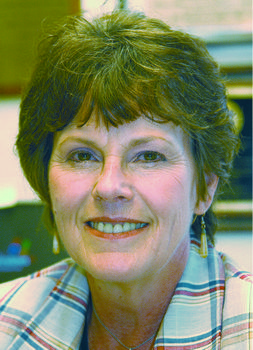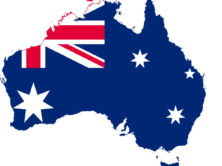
Photo portrait of Carolyn Fluehr-Lobban
The Pig in a Garden: Jared Diamond and The New Yorker series:
Art Science Research Laboratory’s imediaethics.org and SavageMinds.org is simultaneously cross-publishing on both web sites, a series of essays on the controversy surrounding Jared Diamond’s New Yorker article, “Annals of Anthropology: Vengeance is Ours.” The essay series titled,The Pig in a Garden: Jared Diamond and The New Yorker, is written by ethics scholars in the fields of anthropology and communications, as well as journalists, environmental scientists, archaeologists, anthropologists and linguists et al., and edited by Rhonda Roland Shearer, Alan Bisbort and Sam Eifling. Each contributor’s mission was simple: To examine Jared Diamond’s article, and The New Yorker’s decision to publish it, through the lens of their own discipline. We think you will agree that these issues will not soon be put to rest. As Nancy Sullivan writes in her contribution, part of the reason for this series is to reclaim some of the ground among general readers lost to “experts” like Jared Diamond. With this series, imediaethics.org and SavageMinds.org seek to capture that wider general audience for writings about anthropology. Fluehr-Lobban’s essay is third in the series.
* * * * * * * * *
Introduction
The following is a commentary based upon my reading of the article by Jared Diamond in The New Yorker under the heading “Annals of Anthropology:Vengeance Is Ours: What can tribal societies tell us about our need to get even?” and private emails between Rhonda Shearer’s team of researchers Jeffrey Elapa and Michael Kigl and Daniel Wemp that she shared with me.
My comments focus on the blurring of disciplinary boundaries and the apparent lack of informed consent in the relationship between the two non-equals, as well as the possible use of deception by Diamond in his publication of details of events shared with him in confidence by Daniel Wemp. Comparison with another case also originally published in 2000 in The New Yorker—that of Patrick Tierney and anthropologist Napoleon Chagnon and geneticist James Neel—is discussed for the insights it provides.
Blurring of Professional Boundaries between Anthropology and Journalism
There is a difference in kind between the research a wildlife biologist carries out with species occupying a given habitat and the humans in that environment. Researchers working with flora and fauna do not obtain the informed consent of their subjects, and the subjects do not read and critique the writing of the scholar.
Anthropologists studying humans develop long-term relationships of trust through the primary method of participant observation during lengthy stays in a culture where over time they learn its language, beliefs, and practices. Even seemingly abstract cultural artifacts, such as language or ancient material culture, have relevance to living humans whose heritage they actively seek to shape and protect.
In relationships between researcher and researched where the conditions of the study are openly discussed and negotiated, boundaries and lines naturally emerge. Part of the steep learning curve of gaining knowledge of and intimacy in a community is learning what knowledge and facts can be shared outside the confidence of the relationship and those which cannot or should not be revealed.
Anthropologists voluntarily maintain many confidences they either promise or intuit from extended fieldwork which they never reveal or publish. They do this because they have gained an understanding of cultural sensitivities and the likely consequences of making them public. If they are intending to publish such details, they weigh the costs and benefits of revealing sensitive information, thinking perhaps of some ‘greater good,’ they may discuss with their ‘informants’ their wishes regarding disclosure of facts and their own preference regarding anonymity or identity.
In the shift from academic research with humans to journalism, the rules of engagement change. Ethical journalists reveal their identity and the nature of their interest in a person’s story to the person.
For them long-term academic research and the pursuit of knowledge is not the goal, but getting a good story for one’s publisher is the end.
From the extant description of facts in this case, it seems that Diamond was neither the fish of the anthropologist nor the fowl of a journalist in his dealings with Daniel Wemp. Daniel was a World Wildlife Fund (WWF) employee in PNG from1999 to 2002. The context in which information was shared with Diamond was not a clear research setting, but two casual conversations shared on the road sometime in 2001-2002, among trips to and from the airport as Daniel discharged his duties to drive Diamond when he occasionally visited PNG. Diamond is a WWF (US) trustee, since 1993.
With no formal training in either field, Diamond may have engaged in some professional code-switching from the context of wildlife research in Papua/New Guinea to investigative journalist cum anthropologist.
The World is Not the Same ‘out there’
The old order of unregulated and laissez-faire research has passed away, and some anthropologists were the last to notice.
In another crisis of conscience prompted by another essay in The New Yorker (“The Fierce Anthropologist” by Patrick Tierney appeared October 9, 2000) just prior to the release of the book Darkness in El Dorado in which a serious accusation that the vaccine brought by geneticist James Neel and administered through Napoleon Chagnon’s broker role caused a devastating measles epidemic was changed as a result of pre-publication vetting of the article.
Questions were raised in the pre-publication vetting of the article and book that rendered other facts in the book suspect in the eyes of many whose subtitle was “How scientists and journalists devastated the Amazon.”
The publisher W.W. Norton’s change of published text from the original galleys that had been circulated to scholars and the last minute re-writing of The New Yorker article is a story that has yet to fully be told, and ethical questions for the publishing industry may yet be raised. Tierney spent several years locating a publisher and Norton admits having the book “lawyered” before its release for dealing with the most serious allegations of scientific misconduct. (Fluehr-Lobban 2003a).
Besides the legalistic matters involving allegations of a failure by the scientists to intervene and treat a measles epidemic, questions were also raised about the representation by Chagnon of the Yanomami as a “fierce people” (1968), and how this fed into a dehumanization of a people whose primitive violent culture could be profitably objectified in anthropology’s most used ethnographic case.
The cultural violence of the indigenous peoples of the Papua New Guinea highlands have likewise been objectified in ethnographic films such as the classic “Dead Birds,” and now most recently in Diamond’s reinforcing of this stereotype.
For its part a Task Force of the American Anthropological Association (AAA) investigating the conduct of anthropologists– most notably Chagnon but others who had worked among the Yanomami as well including an alleged pedafile–the Final Report made no significant finding of violations of ethical standards by Chagnon or any other American anthropologist, but faulted Tierney for violating journalistic ethics.
Indeed, a resolution fronted by Chagnon supporters condemning such maligning of the reputation of anthropologists was passed by the general membership of the AAA that effectively withdrew any criticism of ethical misconduct.
From this immediate past lesson it may be that Diamond is safe for the time being, for powerful Western scientists are still protected, or this time the outcome might favor the less powerful “subject” of research. At any rate, more “blowback” can be expected from the global peripheries that scientists and journalists explore and sometimes exploit.
Jared Diamond’s telling of Daniel Wemp’s sensitive story may gave been justified for its insights into individual and collective vengeance in human conflict. However, his research and subsequent publication in a popular magazine would have been more ethically sound, as well as more scientifically interesting, had he practiced the basics of informed consent in ethnographic research
Obtaining informed consent that has been a prominent and well known recommendation in all research since the Nuremberg Code of 1947 and the Helsinki Declaration following it in 1964 which states:
“The voluntary consent of the human subject is absolutely essential. This means that the person involved should have legal capacity to give consent; ….should have sufficient knowledge and comprehension of the elements of the subject matter involved as to enable him to make an understanding and enlightened decision. This latter element requires that before the acceptance of an affirmative decision by the experimental subject there should be made known to him the nature, duration, and purpose of the experiment; the method and means by which it is to be conducted; all inconveniences and hazards reasonably to be expected; and the effects upon his health or person which may possibly come from his participation in the experiment. The duty and responsibility for ascertaining the quality of the consent rests upon each individual who initiates, directs or engages in the experiment. It is a personal duty and responsibility which may not be delegated to another with impunity.”
Informed consent as adapted by anthropologists and ratified in the code of ethics of the AAA only in 1998 outlines a dynamic process between researcher and researched whereby the above is discussed and negotiated and agreement is obtained generally without the use of informed consent forms that have been deemed inappropriate to the nature of anthropological research and the relationships it engenders.
There is also the issue of work with non-literate indigenous populations; however, their numbers have declined so precipitously that this is more myth than reality. Daniel Wemp is a literate, informed, and connected injured party, NOT an ethnographic object or factoid.
Avoiding the Use of Deception in Research and dealing with ‘Informants’
Together with informed consent as a guiding principle in research is the assumption that the ethical researcher discusses the nature and intent of the research with the person(s) studied in advance of the research, noting to the best of her/ his ability any risks or possible harm that might result. A cost-benefit ratio or analysis may be used to recruit participants, or to explain the study from its methodological beginnings to analysis and dissemination.
In the past, disguising a researcher’s identity was not discouraged and was even advocated as a useful technique to get the desired data (for example, in a study of the sub-culture of white supremacists). Lying about the intent of research was justified for the ‘greater good,’ and lying could be rationalized in terms of the end justifying the means.
Today, as the world presents itself less in literal or figurative simple black and white terms than in the past, deception is not advised as tangled webs of human relations and ethical ambiguity can so easily result.
This appears to be the case for the Diamond-Wemp relationship where assumptions of trust and confidence between non-equals were apparently made on both sides.
Diamond’s ‘greater good’ message to the broader Western world about violence and revenge nonetheless lost track of the harm he was doing to his ‘subject’ and his circle of relations in the periphery.
Collaboration results in better ethics and better outcomes
Wemp was Diamond’s driver and administrative assistant for the Papua New Guinea affiliate of the World Wildlife Fund. He was not a stranger, research participant, or ‘informant’ engaged by Diamond.
They were not collaborators, although they might have been in a more ethically conscious approach to their relationship. Informed consent or reciprocal consent between them was apparently not discussed. “Collaborative Anthropology,” as well as collaborative journalism or wildlife biology, provides a better model for twenty-first century anthropology, journalism, and other scientific-publishing relationships between more powerful Western researchers and less powerful research participants (cf. Fluehr-Lobban, 2008).
Had there been collaboration, publication of the details of Daniel Wemp’s story might have proceeded through the use of pseudonyms or change in locale of the events described. Were disguising the names or places impossible—due to unique and known or knowable details—the story could have remained as it was delivered, in private and confidence. Moreover, it appears that individual and ‘tribal’ names were reported accurately, while details of the events were less accurate.
Having not collaborated, the result was that sensitive and potentially harmful was disclosed without the knowledge or consent of those most directly affected by their publication violating not only standards of informed consent but also the ‘do no harm’ gold standard in all professional ethics.
Carolyn Fluehr-Lobban, PhD, is a Professor of Anthropology at Rhode Island College where she teaches courses in Anthropology, Islamic, and African and Afro-American Studies. She received her Bachelor’s and Master’s degrees from Temple University and her PhD in Anthropology and African Studies from Northwestern University in 1973. At Rhode Island College she has received both the Award for Distinguished Teaching in 1990 and the Award for Distinguished Scholar in 1998. She is the author or editor of eleven books and the editor of Ethics and the Profession of Anthropology: Dialogue for a New Era (1990; second edition 2003).
REFERENCES:
Chagnon, Napoleon A.
1983. Yanomamö The Firece People. 3rd ed. New York: Holt, Rinehart and Winston, first edition, 1968.
Fluehr-Lobban, Carolyn. 2008. “Collaborative Anthropology as Twenty-First Century Anthropology,” Collaborative Anthropology, vol. 1 (1).
Fluehr-Lobban, Carolyn, ed. 2003. Ethics and the Profession of Anthropology: Dialogue for Ethically Conscious Research. Walnut Creek, CA: AltaMira Books.
Fluehr-Lobban, Carolyn. 2003a. “Darkness in El Dorado: Research Ethics Then and Now” in Ethics and the Profession of Anthropology: Dialogue for Ethically Conscious Research. Walnut Creek, CA: AltaMira Books.
Fluehr-Lobban, Carolyn. 1994. “Informed Consent in Anthropology: We are not Exempt”. Human Organization, vol. 53 (1): 1-10.
Chagnon, Napoleon A. 1983. Yanomamö The Firece People. 3rd ed. New York: Holt, Rinehart and Winston.; first edition, 1968.
Preface for El Dorado Task Force Papers, 2002. http://www.aaanet.org/edtf/final/preface.htm]
Tierney, Patrick. 2000. Darkness in El Dorado: How Scientists and Journalists Devastated the Amazon. New York: W.W. Norton.
Tierney, Patrick. “The Fierce Anthropologist,” The New Yorker, October 9, 2000.




